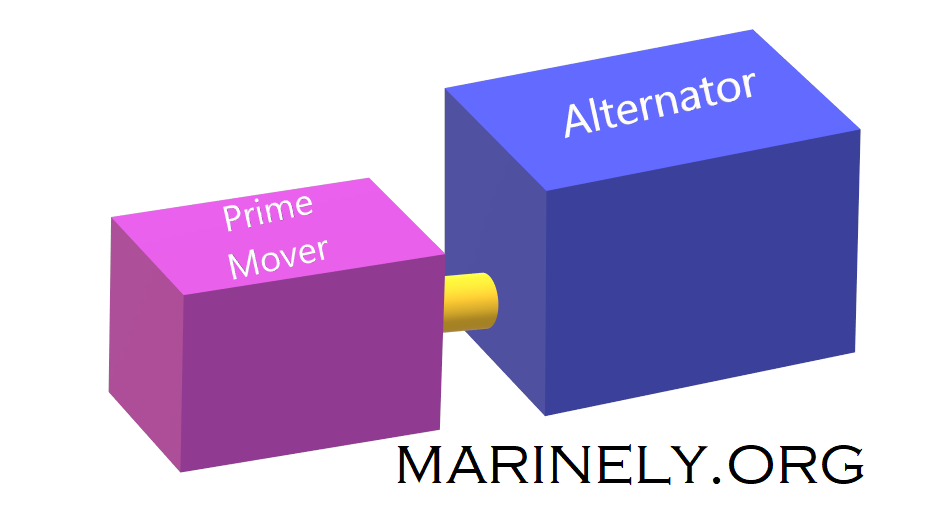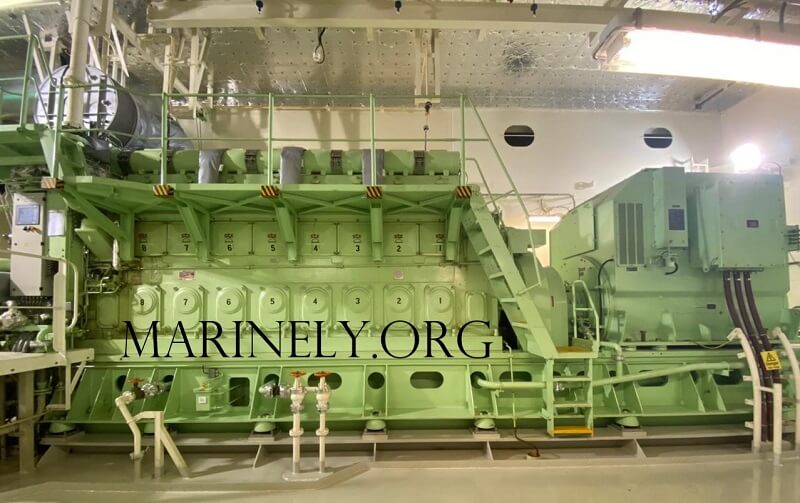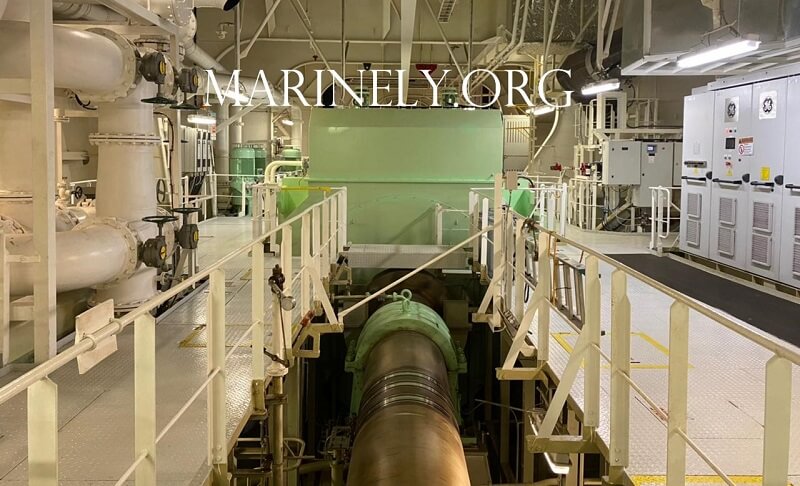How is electricity produced onboard ships?
Hey Reader, Have you ever thought about how electricity is produced onboard ships? Do the ships store it in batteries, which are charged in ports? Do they use power cables laid on the seabed?
Let me take you on a quick tour where we will be taking a look at how electricity is produced onboard. Okay, Seatbelts Tight! Let’s go.
Let’s take the example of your city. The power requirement is met by Hydropower Plants, Solar Plants, Thermal Power Plant, etc. Do you know what happens in a Thermal Power Plant? Coal is burnt to produce heat, which heats the water to make steam. This steam is further used for electricity production.
Now, let’s take an example of any function you are attending. If the power supply by the state cuts out, a generator is started to meet the power demand. The generator consumes fuel and produces electricity.
Something similar happens onboard, except for the fact that we don’t have the power supply by the state. There are 3 ways in which electricity is produced onboard.
They are:-
- Diesel Generator
- Shaft Generator
- Turbine
Before we dive into the details of the above, let’s understand what’s common in all.
The power production unit in the above can be split into two parts- 1. Alternator and 2. Prime Mover

The alternator converts mechanical energy to electrical energy. Prime Mover converts Thermal energy to Mechanical Energy*. The shaft of the prime mover is coupled to the rotor of the alternator either directly or via a reduction gearbox. The prime mover shaft turns the alternator rotor. As per Faraday’s law of EMF- A change of flux w.r.t time, across a coil leads to a generation of potential difference between the two ends of the coil. The electrical energy is generated in the stator side of the alternator which is further used for various purposes onboard.
*for Hydro power plants, the potential energy of stored water is changed to kinetic energy, i.e rotational mechanical energy of the turbine.
As per the Law of Conservation of Energy, Energy can neither be created nor be destroyed, it can just be converted from one form to another. So, it would be the right thing to say that we are producing electricity(Electrical Energy) by using some form of energy.
So, now let’s take each of the above into focus.
Diesel Generator
In this system, a 4-Stroke Diesel Engine acts as a prime mover. All ships have around 3-4 DGs. The fuel is burnt in the engine, which in turn rotates the engine crankshaft. The crankshaft is coupled directly to the rotor of the alternator. The rotor of the alternator starts rotating with the engine crankshaft. As stated above, the emf is produced in the stator coils of the alternator.

Here’s the energy flow flowchart.
Chemical Energy in Fuel is converted to Thermal Energy when burnt in the engine. This thermal energy is converted to mechanical energy by the pistons which further transfer this energy to the crankshaft by rotating it. The mechanical energy flows to the alternator rotor since they are coupled. The mechanical energy of the rotor is converted to electrical energy by the stator coils.
Shaft Generator
This is not found on all the ships. Here, the main engine acts as the prime mover via the intermediate/propeller shaft. For those, who don’t know what these are- The shaft connecting the main engine crankshaft and propeller shaft is called the intermediate shaft. The shaft carrying the propeller at one end is called the propeller shaft. The alternator rotor rotates at the same speed as the intermediate shaft. As stated above, the emf is produced in the stator coils of the alternator.

Here’s the energy flow flowchart.
Chemical Energy in Fuel is converted to Thermal Energy when burnt in the engine. This thermal energy is converted to mechanical energy by the pistons which further transfer this energy to the crankshaft by rotating it. The mechanical energy flows to the alternator rotor via the intermediate shaft since they are coupled. The mechanical energy of the rotor is converted to electrical energy by the stator coils.
Turbine
Turbines for power generation are generally found on ships fitted with WHR(Waste Heat Recovery) systems. It can either be a steam turbine(ST) or a power turbine(PT) or in some cases both. Regardless of the type of turbine, the turbine shaft is connected to the alternator rotor via a reduction gearbox. In systems where both turbines are used, the power turbine shaft is connected to the steam turbine shaft via a SSS clutch and reduction gearbox. Then, the steam turbine shaft is connected to the alternator rotor via a reduction gearbox.

For a power turbine, the driving fluid is exhaust gas from Main Engine. For a steam turbine, the driving fluid is the steam generated from the waste heat recovered from the main engine exhaust. Independent of the type of system, the alternator rotor rotates with the turbine shaft because they are coupled via a reduction gearbox. As stated above, the emf is produced in the stator coils of the alternator.
Here’s the energy flow flowchart.
Only Steam Turbine
Chemical Energy in Fuel is converted to Thermal Energy when burnt in the engine. This thermal energy is converted to mechanical energy by the pistons which further transfer this energy to the crankshaft by rotating it. The remaining thermal energy in the exhaust gas after the turbocharger is the waste heat which can’t be further used by the engine. This thermal energy is transferred to the feed water of the Exhaust Gas Boiler(EGB) when the exhaust gas is passing through it. After the energy transfer, the water turns into steam. Now this steam with thermal energy hits the blades of the steam turbine thus forcing it to move. This thermal energy of steam is converted to mechanical energy as the steam turbine shaft starts rotating. This mechanical energy is transmitted via the reduction gearbox to the alternator rotor. The mechanical energy of the rotor is converted to electrical energy by the stator coils.
Only Power Turbine
Chemical Energy in Fuel is converted to Thermal Energy when burnt in the engine. This thermal energy is converted to mechanical energy by the pistons which further transfer this energy to the crankshaft by rotating it. The remaining thermal energy in the exhaust gas after the turbocharger is the waste heat which can’t be further used by the engine. A part of this is redirected towards the power turbine. The remaining continues to flow through EGB which produces steam for general service. The exhaust gas with thermal energy hits the blades of the power turbine thus forcing it to move. This thermal energy of exhaust gas is converted to mechanical energy as the power turbine shaft starts rotating. This mechanical energy is transmitted via the reduction gearbox to the alternator rotor. The mechanical energy of the rotor is converted to electrical energy by the stator coils.
Both Power and Steam Turbine
Chemical Energy in Fuel is converted to Thermal Energy when burnt in the engine. This thermal energy is converted to mechanical energy by the pistons which further transfer this energy to the crankshaft by rotating it. The remaining thermal energy in the exhaust gas after the turbocharger is the waste heat which can’t be further used by the engine. A part of this is redirected towards the power turbine. The remaining continues to flow through EGB which produces steam for the steam turbine. Please note that in such systems, the steam turbine is started first, and then later the power turbine is started. Since the steam turbine shaft is already rotating at a very high speed, we need a clutch for connecting the PT shaft with the ST shaft via the reduction gearbox. We can either use only steam turbine or both turbines for power generation. This depends on the engine load. Power turbine gives extra energy to the already rotating shaft to increase the power generation capacity. Let’s resume. Now the steam with thermal energy hits the blades of steam turbine thus forcing it to move. This thermal energy of steam is converted to mechanical energy as the steam turbine shaft starts rotating. This mechanical energy is transmitted via the reduction gearbox to the alternator rotor. The mechanical energy of the rotor is converted to electrical energy by the stator coils. Now, if the engine load permits, the power turbine is started. The exhaust gas with thermal energy hits the blades of power turbine thus forcing it to move. This thermal energy of exhaust gas is converted to mechanical energy as the power turbine shaft starts rotating. Now, the SSS clutch engages and this mechanical energy is transmitted via the reduction gearbox to the steam turbine shaft. Since the steam turbine shaft is already coupled to the alternator (via a reduction gearbox), the energy is further transferred to the alternator rotor. Please note that in some systems for power turbine, there is an exhaust gas bypass. Instead of allowing the whole exhaust gas pass through a turbocharger, the bypass valve allows some exhaust gas to go to PT for steam generation and then meet the main exhaust stream after the turbocharger.
Conclusion
Power generation onboard is done via 1. Diesel Generator 2. Shaft Generator 3. Turbine
| Method | Prime Mover | Use Case |
| Diesel Generator | 4-S Diesel Engine | All Ships |
| Shaft Generator | Main Engine | Few Ships |
| Turbine | ST and/or PT | Ships with WHR |
We have reached the destination of this journey. We hope you gained insights about power generation onboard. If you have any questions or you want to discuss something on this topic, please use the comments section below.
See you soon 😉
Thank you for reading.
By: Abhishek


